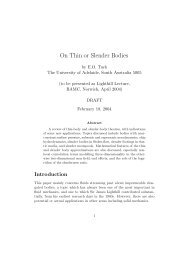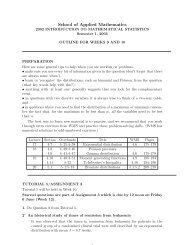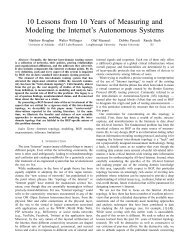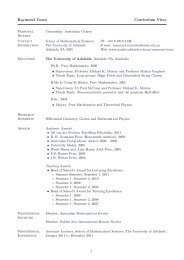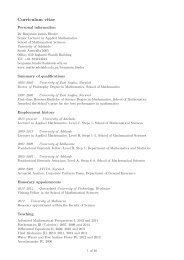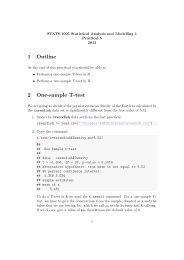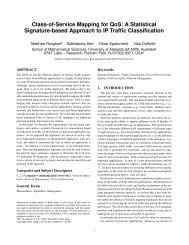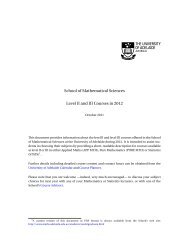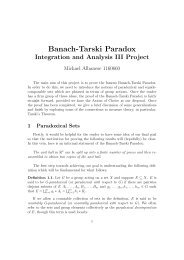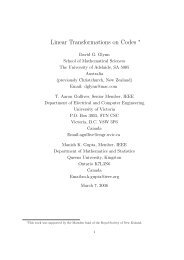PDF of Lecture Notes - School of Mathematical Sciences
PDF of Lecture Notes - School of Mathematical Sciences
PDF of Lecture Notes - School of Mathematical Sciences
You also want an ePaper? Increase the reach of your titles
YUMPU automatically turns print PDFs into web optimized ePapers that Google loves.
1. DISTRIBUTION THEORY<br />
1.6 Moments <strong>of</strong> transformed RVS<br />
Suppose X is a RV and let Y = h(X).<br />
If we want to find E(Y ) , we can proceed as follows:<br />
1. Find the distribution <strong>of</strong> Y = h(X) using preceeding methods.<br />
⎧∑<br />
yp(y) Y discrete<br />
⎪⎨ y<br />
2. Find E(Y ) =<br />
⎪⎩<br />
Theorem. 1.6.1<br />
∫ ∞<br />
−∞<br />
yf(y) dy Y continuous<br />
(forget X ever existed!)<br />
If X is a RV <strong>of</strong> either discrete or continuous type and h(x) is any transformation (not<br />
necessarily monotonic), then E{h(X)} (provided it exists) is given by:<br />
⎧∑<br />
h(x) p(x) X discrete<br />
⎪⎨ x<br />
E{h(X)} =<br />
⎪⎩<br />
Pro<strong>of</strong>.<br />
∫ ∞<br />
−∞<br />
h(x)f(x) dx X continuous<br />
Not examinable.<br />
Examples:<br />
1. CDF transformation<br />
Suppose U ∼ U(0, 1). How can we transform U to get an Exp(λ) RV<br />
Solution. Take X = F −1 (U), where F is the Exp(λ) CDF. Recall F (x) =<br />
1 − e −λx for the Exp(λ) distribution.<br />
To find F −1 (u), we solve for x in F (x) = u,<br />
18





